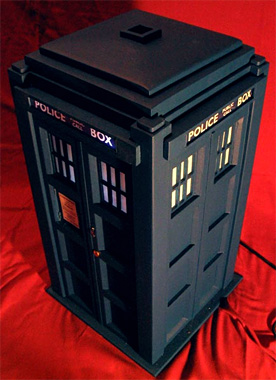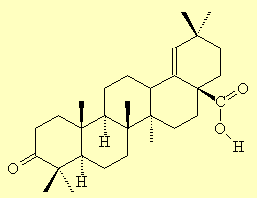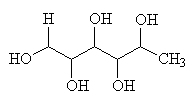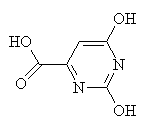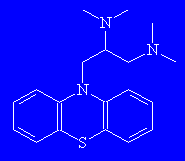The formula is perfect, spot on, really.Oh, and let's not forget that the example made me literally laugh out loud. I don't mean the normal chuckle that one lets out when reading something funny while sitting on the couch alone, but a full-on laugh out loud. ( and due to my allergies today, not a sexy laugh. More like, if a normal laugh got a flat tire. "Weh-he-he-he-he". eww.) This article from the Hairpin made me just about fall off the couch. Read it and enjoy, friends. PS-Some language may not be safe for work.
Read the article here.
The Forbidden Plan It
Thursday, October 27, 2011
Wednesday, October 26, 2011
For all the Other Walking Dead Fans...
Here's a link to a cool photo essay on what it takes to become a Walking Dead zombie. So cool!
From Human to Corpse: Walking Dead Makeup
Also, check out this other blog about season 2 of the Walking Dead.
From Human to Corpse: Walking Dead Makeup
Also, check out this other blog about season 2 of the Walking Dead.
Console Case Mods That Make me Smile.
I really like the steampunk PS3, but these are all pretty awesome. Google image search awesome case mod and some really creative stuff comes up. Being a geek and a gamer myself, these make my inner nerd smile. :)
It's-a Mario!
Oh dear Lord, that is awesome.
I love anything steam punk! This steampunk PS3 is way cool.
Wall-E makes a cute computer.
Tardis PC case mod!
HolyToledo! a steampunk laptop!
Batmo-pc.
Hello Kitty.
Halo Xbox 360.
FarCry2 PS3
Monday, May 2, 2011
Molecules with Silly Names
Some of my favorite molecules with Silly Names. See all of them here, including information on his upcoming book release.
Curious Chloride and Titanic Chloride
The trivial name for some curium compounds can be either curous or 'curious', so curium trichloride becomes curious chloride. However the only curious property it has is that it's sufficiently radioactive that a solution, if concentrated enough, will boil spontaneously after a while. (I wonder if a molecule with 2 Cm atoms in would be 'bi-curious'...?)
In a similar way, titanium compounds can be 'titanic', so we get the wonderfully named titanic chloride, TiCl4. It's also interesting to know that in the titanium industry, TiCl4 is known as 'tickle'. Furthermore, curium oxides are called 'curates', so the titanium compound would be Titanic Curate, and since curium can have more than one valency we could end up with Curious Curates. But I'm sure these are already a well-known phenomenon...
In a similar way, some nickel compounds can be referred to as 'nickelous' - so we get compounds like Nickelous Sulfate (a nice guy by all accounts...)
Moronic Acid
This is a triterpenoid organic acid that is found in Pistacia resin, and is therefore of interest to people studying archaeological relics, shipwrecks and the contents of ancient Egyptian jars. Its name comes from its corresponding hydroxy acid, which was originally named morolic acid since it was isolated from the heartwood of the mora tree, mora excelsa. The keto acid then became moronic acid. Derivatives of this are called moronates, as in 'which moron-ate the contents of this jar?'
Fucitol
Although this sounds like what a chemist might exclaim when their synthesis goes wrong, it's actually an alcohol, whose other names are L-fuc-ol or 1-deoxy-D-galactitol. It gets its wonderful trivial name from the fact that it is derived from the sugar fucose, which comes from a seaweed found in the North Atlantic called Bladderwrack whose latin name is Fucus vesiculosis. Interestingly, there are a few articles in the Journal of Biochemistry throughout 1997 concerning a kinase enzyme which acts on fucose. The creators of these articles were Japanese, and seemed to have missed the fact that fucose kinase should not be abbreviated as 'fuc-K'. Similarly, the E. coli K-12 Gene has other proteins that have been named Fuc-U and Fuc-R. Recently, the abbreviation for fucose-kinase enzyme has been cleaned up to 'FUK'. However, there are now clones of this where the cloning position in the DNA sequence is labelled by its Open Reading Frame (ORF) number. And of course, these clones are called FUK ORF!
Erotic Acid
No, this isn't the world's best aphrodisiac. Its correct name is orotic acid, but it has been misspelt so often in the chemical literature that it is also known as erotic acid! Another name for it is vitamin B13. Apparently, if you add another carbon to it, it becomes homo-erotic acid...
Spamol
Monty Python's favourite molecule? Spamol might also conjure images of unwanted "Make Money Fast" emails circulating the globe at the speed of light ("spam - all"). Its other names are aminopromazine, lispamol or lorusil, and it's actually used as an anti-spasmodic therapeutic agent.
Curious Chloride and Titanic Chloride
The trivial name for some curium compounds can be either curous or 'curious', so curium trichloride becomes curious chloride. However the only curious property it has is that it's sufficiently radioactive that a solution, if concentrated enough, will boil spontaneously after a while. (I wonder if a molecule with 2 Cm atoms in would be 'bi-curious'...?)
In a similar way, titanium compounds can be 'titanic', so we get the wonderfully named titanic chloride, TiCl4. It's also interesting to know that in the titanium industry, TiCl4 is known as 'tickle'. Furthermore, curium oxides are called 'curates', so the titanium compound would be Titanic Curate, and since curium can have more than one valency we could end up with Curious Curates. But I'm sure these are already a well-known phenomenon...
In a similar way, some nickel compounds can be referred to as 'nickelous' - so we get compounds like Nickelous Sulfate (a nice guy by all accounts...)
Moronic Acid
This is a triterpenoid organic acid that is found in Pistacia resin, and is therefore of interest to people studying archaeological relics, shipwrecks and the contents of ancient Egyptian jars. Its name comes from its corresponding hydroxy acid, which was originally named morolic acid since it was isolated from the heartwood of the mora tree, mora excelsa. The keto acid then became moronic acid. Derivatives of this are called moronates, as in 'which moron-ate the contents of this jar?'
Fucitol
Although this sounds like what a chemist might exclaim when their synthesis goes wrong, it's actually an alcohol, whose other names are L-fuc-ol or 1-deoxy-D-galactitol. It gets its wonderful trivial name from the fact that it is derived from the sugar fucose, which comes from a seaweed found in the North Atlantic called Bladderwrack whose latin name is Fucus vesiculosis. Interestingly, there are a few articles in the Journal of Biochemistry throughout 1997 concerning a kinase enzyme which acts on fucose. The creators of these articles were Japanese, and seemed to have missed the fact that fucose kinase should not be abbreviated as 'fuc-K'. Similarly, the E. coli K-12 Gene has other proteins that have been named Fuc-U and Fuc-R. Recently, the abbreviation for fucose-kinase enzyme has been cleaned up to 'FUK'. However, there are now clones of this where the cloning position in the DNA sequence is labelled by its Open Reading Frame (ORF) number. And of course, these clones are called FUK ORF!
Erotic Acid
No, this isn't the world's best aphrodisiac. Its correct name is orotic acid, but it has been misspelt so often in the chemical literature that it is also known as erotic acid! Another name for it is vitamin B13. Apparently, if you add another carbon to it, it becomes homo-erotic acid...
Spamol
Monty Python's favourite molecule? Spamol might also conjure images of unwanted "Make Money Fast" emails circulating the globe at the speed of light ("spam - all"). Its other names are aminopromazine, lispamol or lorusil, and it's actually used as an anti-spasmodic therapeutic agent.
Tuesday, April 26, 2011
Crappy Taxidermy
Bird-footed swamp cat
On the same lines, Sam Sanfiliipo owns a funeral home in Madison, Wisconsin. As a distraction for mourners (and a gallery for his work), he set up a collection of dioramas in the basement of the funeral home featuring stuffed squirrels engaging in various activities, such as the rodeo here. See the rest of his photos here.Artist and animal activist Angela Singer uses existing stuffed animals as a platform for artworks that make an artistic statement. She adds jewels and flowers to existing taxidermied animals to highlight her belief that the death and taxidermy of these animals is wrong. Whether or not you agree with her statements or not, her art is visually stunning. See the rest of her work here.
New Zealand sculptor Lisa Black modifies existing mounted animals as well, with the addition of steampunk accessories. These she calls “fixed” animals, as if they were broken and then mended with mechanical prostheses.
Finally, Brewdog specialty beer outlet offered a limited edition of 12 beer bottles covered with stuffed animals last year. The End of History was a super strong beer bottled inside seven stoats, four squirrels, and one hare. The bottles sold for £500 each.
Sunday, February 27, 2011
Critical Care: BNP and Heart Failure- A Brief Overview
BNP. What is it? Why is it important? BNP is a substance secreted by the heart in response to heart damage and worsening heart failure. BNP stands for B-type Natriuretic Peptide. It's sometimes called brain natriuretic peptide, and I have no idea why. Among other tests, it can show us (the healthcare team) whether or not there is heart failure. Testing for BNP is a blood draw laboratory test. Normal BNP level is 100 or below. A level above 100 indicates heart failure.
Heart failure is the number 1 cause of hospitalization in the United States. Signs and symptoms of heart failure include shortness of breath, high heart rate, frothy blood-tinged sputum, edema (fluid collecting in the body) which can show up as puffy legs or abdomen or weight gain. (see picture above) There is no cure for heart failure and the best way to prevent it is to reduce your risk factors. These include diet, exercise, not smoking, and reducing stress.
Heart failure is most often cause by cardiac arrest (stopped heart), Myocardial infarction (heart attack), and cardiomyopathy (problems withing the heart muscle including stiffening or overgrowth of heart muscle, or enlarged heart.)
Heart failure is the number 1 cause of hospitalization in the United States. Signs and symptoms of heart failure include shortness of breath, high heart rate, frothy blood-tinged sputum, edema (fluid collecting in the body) which can show up as puffy legs or abdomen or weight gain. (see picture above) There is no cure for heart failure and the best way to prevent it is to reduce your risk factors. These include diet, exercise, not smoking, and reducing stress.
Heart failure is most often cause by cardiac arrest (stopped heart), Myocardial infarction (heart attack), and cardiomyopathy (problems withing the heart muscle including stiffening or overgrowth of heart muscle, or enlarged heart.)
Beverages on a Molecular Level
Bevshots is a company that sells art prints of our favorite beverages on a molecular level. Research scientist Michael Davis of Florida State University crystalizes different cocktials on a lab slide and then photographs them at a microscopic level using a camera attached to a light microscope. The photos are stunning and surprisingly inexpensive. They range from $24-55. You can also buys ties with your favorite adult beverage print on it.
For more molecular fun, take the Bevshots quiz and identify the beverage based on the picture of it at the molecular level.
For more molecular fun, take the Bevshots quiz and identify the beverage based on the picture of it at the molecular level.
Subscribe to:
Comments (Atom)






